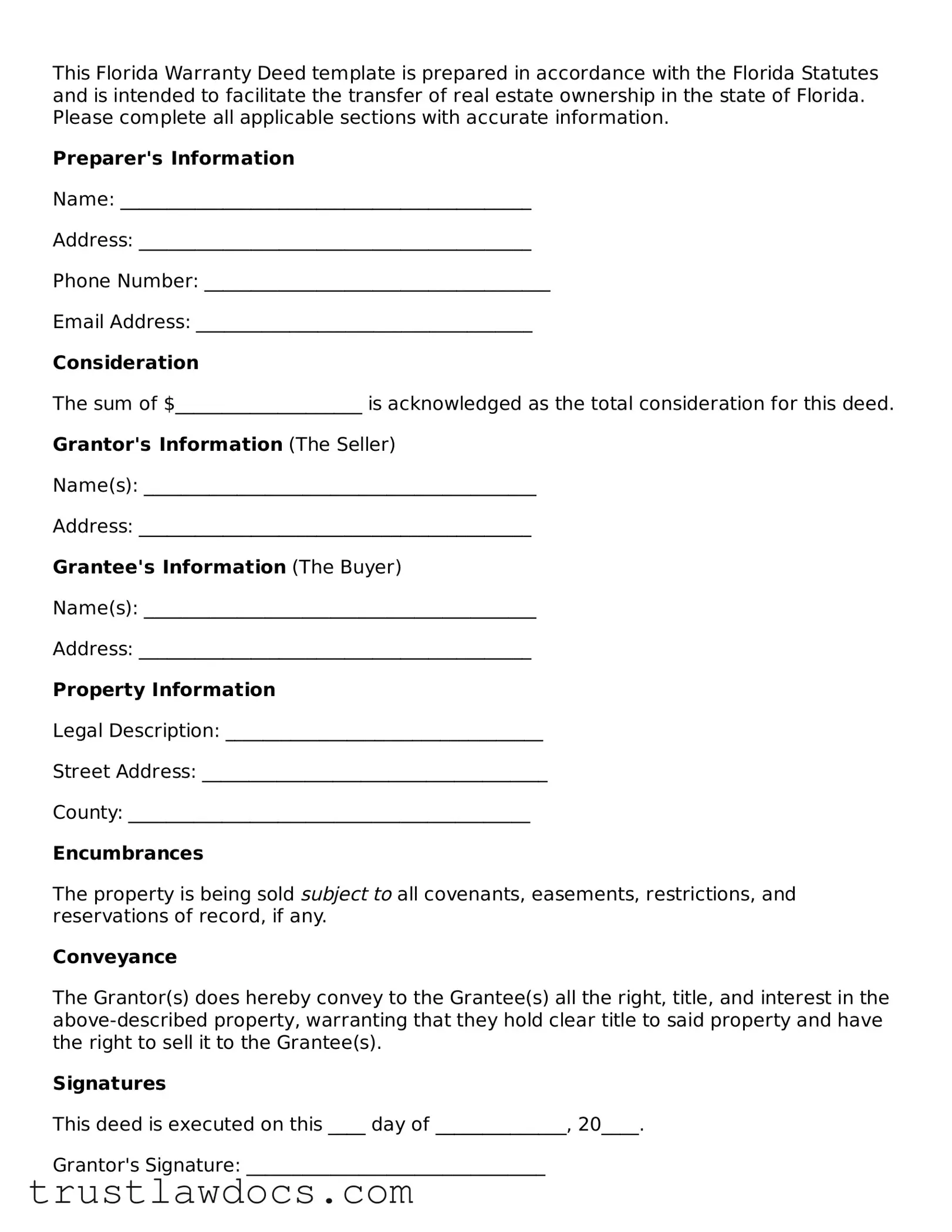This Florida Warranty Deed template is prepared in accordance with the Florida Statutes and is intended to facilitate the transfer of real estate ownership in the state of Florida. Please complete all applicable sections with accurate information.
Preparer's Information
Name: ____________________________________________
Address: __________________________________________
Phone Number: _____________________________________
Email Address: ____________________________________
Consideration
The sum of $____________________ is acknowledged as the total consideration for this deed.
Grantor's Information (The Seller)
Name(s): __________________________________________
Address: __________________________________________
Grantee's Information (The Buyer)
Name(s): __________________________________________
Address: __________________________________________
Property Information
Legal Description: __________________________________
Street Address: _____________________________________
County: ___________________________________________
Encumbrances
The property is being sold subject to all covenants, easements, restrictions, and reservations of record, if any.
Conveyance
The Grantor(s) does hereby convey to the Grantee(s) all the right, title, and interest in the above-described property, warranting that they hold clear title to said property and have the right to sell it to the Grantee(s).
Signatures
This deed is executed on this ____ day of ______________, 20____.
Grantor's Signature: ________________________________
Grantor's Printed Name: ____________________________
Grantee's Signature: _______________________________
Grantee's Printed Name: ___________________________
State of Florida
County of ____________________
On this ____ day of _______________, 20____, before me, the undersigned notary public, personally appeared ______________________________, known to me (or satisfactorily proven) to be the person(s) whose name(s) is/are subscribed to the within instrument and acknowledged that he/she/they executed the same for the purposes therein contained.
In witness whereof, I hereunto set my hand and official seal.
Notary Public Signature: ____________________________
Printed Name: _____________________________________
Commission Number: ________________________________
Expiration Date: _________________________________
